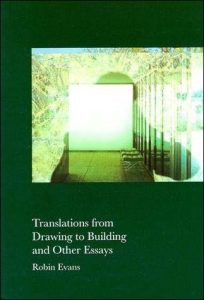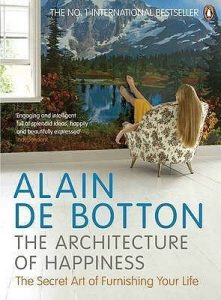
Architects are people who make countless connections every day. They link geography to material, people to experiences and design to space. These connections inspire them to make transcendent buildings. Therefore, it isn’t a surprise that they are also motivated to pen down some of the most excellent books ever written. After all, the art of writing is somewhat similar to the art of designing a building. Both require weaving a vision into reality.
As per his expertise, there are three novels that he would recommend every architect to read at least once in their career. Each book is an excellent way to remind the architect of the creative possibilities that exist in this line of work. The written word will motivate them to dream of the marvel architecture can be and the experiences it can build.
Read More About : Types Of Genres In Literature Books
Architecture Books That Every Architects Should Read
1. Translations from Drawing to Building by Robin Evans
 Throughout his lifetime, Robin Evans penned a number of essays that covered topics like:
Throughout his lifetime, Robin Evans penned a number of essays that covered topics like:
- military architecture
- aspects of geometry
- evolution and development of buildings
Translation from Drawing to Building is a compilation of eight of his pieces that he wrote between 1970 to 1990. The book by the extremely perceptive historian of architecture also includes the stimulating “Mies van der Rohe’s Paradoxical Symmetries.”
2. The Ten Books Of Architecture by Vitruvius
Marcus Vitruvius Pollio was a Roman architect that lived over two millenniums back. The book by the engineer remains the most influential book in architecture and one of the oldest too. The precepts he created were followed diligently not just for decades but centuries. It was those ideologies that spread the Greco-Roman style of architecture across the globe. Some of the areas covered in the book are:
- Guidance to the right design
- Construction of building in the classical style
3. Architecture of Happiness by Alain de Botton
A known philosopher, Button connects the happiness of humans to the physical environment. He describes how it plays a crucial role. Furthermore, the book finds the connection between location and identity, i.e., who we become as a person is heavily influenced by the place where we are.
4. Concrete by William Hall ed.
Though notorious, concrete has a beauty that not many construction materials have and this book explores it to the last iota. It expounds on a few of the stunning concrete structures made over the course of history starting from ancient Rome and ending to the time the book was written.
Though written quite a long time back, all three of these books have continued to influence hordes of architectures to this day. They show how the tiniest detail can connect to something as massive as architecture. They explore how architects learn to make those remarkable links in real life every day.






